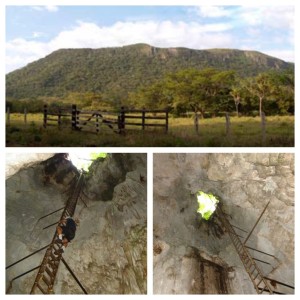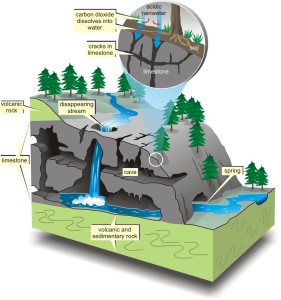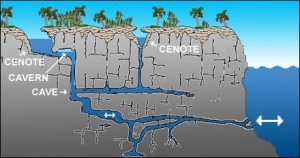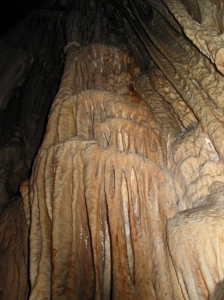The day after we moved we decided to hell with sorting out the house we were going to get out and about and have a look at some of the country. About 30 minutes away from here we had seen a sign that said Barra Honda National Park.
 Costa Rica takes care of its environment and it is often held up as a model for other countries. I looked on the internet and various reports state that between 20 and 25% of the land mass is protected and many of the protected areas are National Parks. There are 26 National Parks in Costa Rica that cover rainforest, tropical dry forest, marine areas, wetlands and volcanoes.
Costa Rica takes care of its environment and it is often held up as a model for other countries. I looked on the internet and various reports state that between 20 and 25% of the land mass is protected and many of the protected areas are National Parks. There are 26 National Parks in Costa Rica that cover rainforest, tropical dry forest, marine areas, wetlands and volcanoes.
Tectonic movement resulted in the uplifting of the coral reef and over time a layer up to 250 m thick of limestone formed over Barra Honda mesa during the Paleocene era (approximately 60 million years ago). The flat part of the mesa is 300m (984 ft) high but the highest peak is 434 m (1424 ft).
Apparently everyone thought that the Barra Honda was an extinct volcano, there is an account in the Geographic Dictionary of Costa Rica by Felix F Noriega printed in 1904 that states:
‘In the jurisdiction of Barra Honda is a hill of the same name, almost made of limestone and has on its top two basins, sort of craters, 4 m circumference whose bottom could not be glimpsed so it is believed that this mountain is an extinct volcano.’
I have also found when researching, the same statement repeated on countless websites but could not find any attributable account for the following:
‘[People] took the whirring of the bats wings for volcanic activity and the smell of guano for sulphur fumes.’
Some of the caves were known to people local to the area, there is a report of a school teacher Mr. Lucas Raul Chacon taking students into a highly decorated cave in 1912, another teacher Don Alejandro Porras, in the same year found five openings, four vertical and one inclined.
The cave system was only rediscovered in the 1960s by a French caver Robert Vergnes and there have been countless expeditions to try to map the systems within Barra Honda. There have been over 40 caves identified but only 29 have been mapped so far. These explorations and discoveries led to the creation of Barra Honda National Park in 1974 in order to protect the ‘karst’ caves.
 Karst caves are formed when rain mixes with carbon dioxide in the atmosphere as it falls to the ground and then picks up more of the gas as it seeps into the soil. The combination is a weak acidic solution that dissolves the limestone.
Karst caves are formed when rain mixes with carbon dioxide in the atmosphere as it falls to the ground and then picks up more of the gas as it seeps into the soil. The combination is a weak acidic solution that dissolves the limestone.
The acidic water seeps down into the limestone through cracks and fractures and creates a network of passages like an underground drainage system. The passages widen as more water seeps down, allowing even more water to flow through them, eventually these become caves.
 One of the two caves open to the public at Barra Honda, La Terciopelo Cave has rock formations called speleothems, these hang from the ceiling or emerge from the cave floor. They are created when the carbon dioxide in the acidic water escapes in the airiness of the cave and the dissolved calcite from the limestone hardens once again.
One of the two caves open to the public at Barra Honda, La Terciopelo Cave has rock formations called speleothems, these hang from the ceiling or emerge from the cave floor. They are created when the carbon dioxide in the acidic water escapes in the airiness of the cave and the dissolved calcite from the limestone hardens once again.
The formations have been likened to objects such as fried eggs, popcorn, curtains, flowers, sharks teeth, drinking straws and the most famous formation is ‘El Órgano’ (the Organ) which when tapped gently plays soft melodic notes.
In 1970 fossilised human remains were found in the Nicoya Cavern, possibly 6 individuals whose remains were calcified. The Italian anthropologist Laurencich Minelli during a number of expeditions between 1974 – 9 found within 700 m of the Nicoya cavern entrance evidence that there had been a settlement between 500 BC and 300 AD, he found a quarry and flint workshops. The artefacts found linked to the same time period as the human remains found in the cave.
 He suggests that the Nicoya cavern was at one point a ‘cenote’ (pronounced say-NO-tay), a sinkhole filled with water. The inhabitants of the settlement saw the cavern as a ritual place and with the help of vines to help them enter the cavern’s angled entrance, bodies were laid to rest possibly with offerings and over time the bodies became calcified. There is evidence that it may have been used up until the 11th century. The water from the cavern has long drained away.
He suggests that the Nicoya cavern was at one point a ‘cenote’ (pronounced say-NO-tay), a sinkhole filled with water. The inhabitants of the settlement saw the cavern as a ritual place and with the help of vines to help them enter the cavern’s angled entrance, bodies were laid to rest possibly with offerings and over time the bodies became calcified. There is evidence that it may have been used up until the 11th century. The water from the cavern has long drained away.
Just read back over what I had written, sorry if it has turned into a school lesson but as I researched I found more and more information – most in Spanish (thank you Google translate) but really fascinating.
 If you visit the park at present only one of the caverns La Terciopelo is open to the public you will have to wear a hard hat and a harness (provided by the park) and your guide will take your group – usually no more than 10 people hiking up to the cavern entrance (approximately one hour). The harness is just a precaution as you descend the 17m (55 ft) aluminium ladder into the cavern.
If you visit the park at present only one of the caverns La Terciopelo is open to the public you will have to wear a hard hat and a harness (provided by the park) and your guide will take your group – usually no more than 10 people hiking up to the cavern entrance (approximately one hour). The harness is just a precaution as you descend the 17m (55 ft) aluminium ladder into the cavern.
The park is almost 2,300 hectares (just over 9 square miles) and also has a number of amazing hiking trails through the dry tropical forest. December to April is the dry season so it is easier to see the animals as the trees and shrubs lose their leaves. There are deer, coatis, agutis, anteaters, monkeys and a multitude of different insects and birds to name just some of the things you may see on your hike.
You’re wondering whether I went down into the cave, well let me put your mind at rest – no I didn’t. I don’t care how big it is inside I do not like or am comfortable in small spaces. It has taken me decades to be able to go into a lift on my own and I still have to fight closing my eyes tight until I get to the bottom or top. I think you get the picture, I wish that I could go down but I can’t, I am hoping that there are more karst caves in Costa Rica to visit that have a wider entrance where I can glimpse daylight but I think the nature of the beast is that they are enclosed and not easy to get to.
C’est la vie.
So ML and I had a gentle amble along the some hiking trails, we didn’t go fast or very far as it turned out because we kept seeing things and stopping to photograph them. But we had a wonderful time, some photographs and plenty of fresh air. It is well worth a visit.

